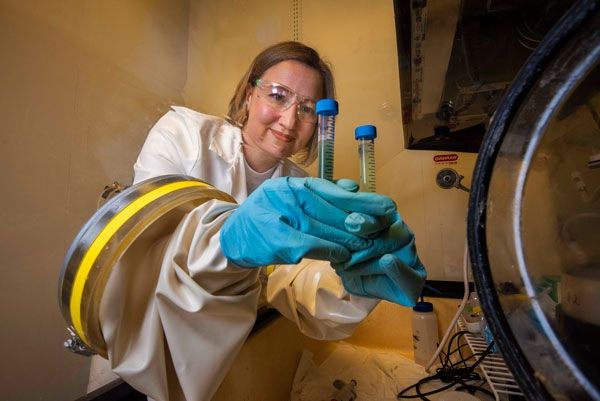Sandia researchers have discovered a mechanism to “switch on” iron residing in clay mineral structures, leading to an understanding of how to make iron reactive under oxygen-free conditions.
This research will help scientists understand and predict how contaminants such as arsenic, selenium and chromium move through the environment and enter waterways. These chemical principles can be applied to develop natural soil barriers to remove those contaminants from water and make reactive membranes, which can transform contaminants during the water filtration process.
The work is featured on the cover of a recent issue of Environmental Science: Nano in a paper titled, “‘Switching on’ iron in clay minerals,” by Sandia researchers Anastasia Ilgen, Kevin Leung and Rachel Washington, and Ravi Kukkadapu from Pacific Northwest National Laboratory. The work was funded by DOE’s Basic Energy Sciences program.
Read more at Sandia National Laboratories
Photo: Anastasia Ilgen run experiments in an anaerobic glovebox. (Photo by Randy Montoya)


